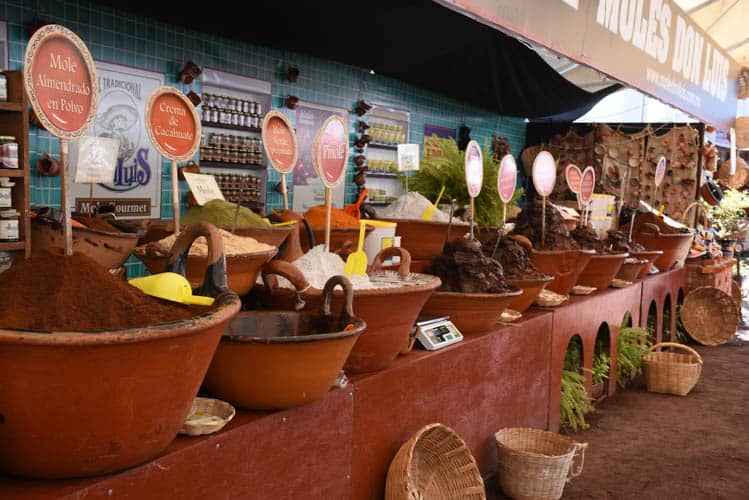
Go World Travel is reader-supported and may earn a commission from purchases made through links in this piece.
Whenever I’m in Oaxaca and Puebla–which never seems to be often enough–I eat mole until I’m about to burst. And then I find a way to cram in a little more. I love trying different restaurants and walking into stores that sell mole, sampling several varieties and buying a few to bring back home.
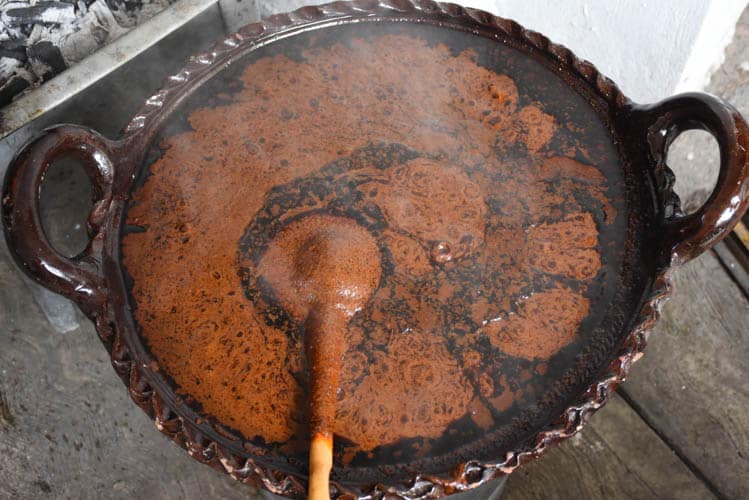
The Magic Neighborhood of San Pedro Atocpan
I had thought that those two cities were the centers for mole in Mexico. So I was more than a little surprised to learn that San Pedro Atocpan, a lovely pueblo located in the southeastern corner of Mexico City, is considered the country’s mole capital.
Not only is it famous for its mole, but the pueblo also holds a mole fair for almost the entire month of October. There was no doubt where I was going to spend that month.
San Pedro is part of Milpa Alta, one of the largest boroughs of Mexico City and the most rural. It’s also one of the most indigenous, where people have held onto their customs.
Many speak Nahuatl, the Aztec language (in Nahuatl, Atocpan means “on fertile soil”). Because of its indigenous culture, San Pedro has been designated as a Barrio Mágico–a Magic Neighborhood.
According to Luís Gutierrez Romero, who has chronicled life in San Pedro for decades, San Pedro became known for its mole in the mid-1940s. This is when people started selling it in markets in Mexico City. Its popularity grew from there.
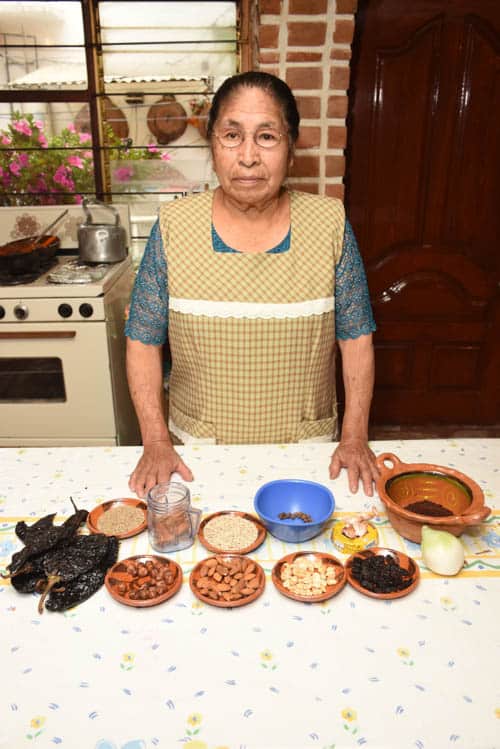
The Beginnings of Mole in Mexico
Mole had humble beginnings. In pre-Hispanic times, indigenous people made a simple sauce consisting of chile and two or three other ingredients. There’s some disagreement about when mole was developed into the delicious sauce it is today.
Some sources claim its originated in the 17th century, while others claim that it was developed a century earlier. But all agree that it was in the convents in Puebla that mole got its start.
One legend has it that a nun in the Santa Rosa convent created Mexico’s most famous sauce, another that it was a monk. Personally, I’m not too concerned about when it was first made or who first made it. I’m just glad someone did.
It’s estimated that there are over 200 kinds of mole in Mexico. Each recipe has 20 or more ingredients, including different chiles (ancho, mullato, pasillo), spices (cloves, cinnamon, anise, rosemary), nuts (piñon, peanuts, almonds), onions and garlic.
Mole Almendrado, made with almonds, is the most popular in San Pedro although mole rojo, verde and pipián are also popular.
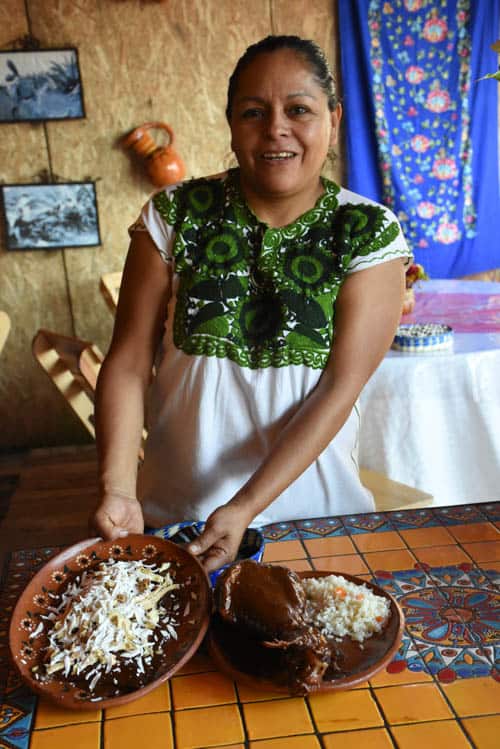
Where to Enjoy Mole Dishes in San Pedro
There are so many stores and restaurants lining Avenida Hidalgo, San Pedro’s main street–and even more located on side streets–that making a decision about which one to visit can be challenging. My advice is to just pick a couple at random.
Every store offers a dozen or more kinds of mole. Stop in any of them and the helpful staff will gladly offer a wide variety to taste. You can buy mole as a powder or paste and Luís Juan Alvarado Retana, owner of Mole don Luís, told me that the powder lasts longer. That’s what I usually buy.
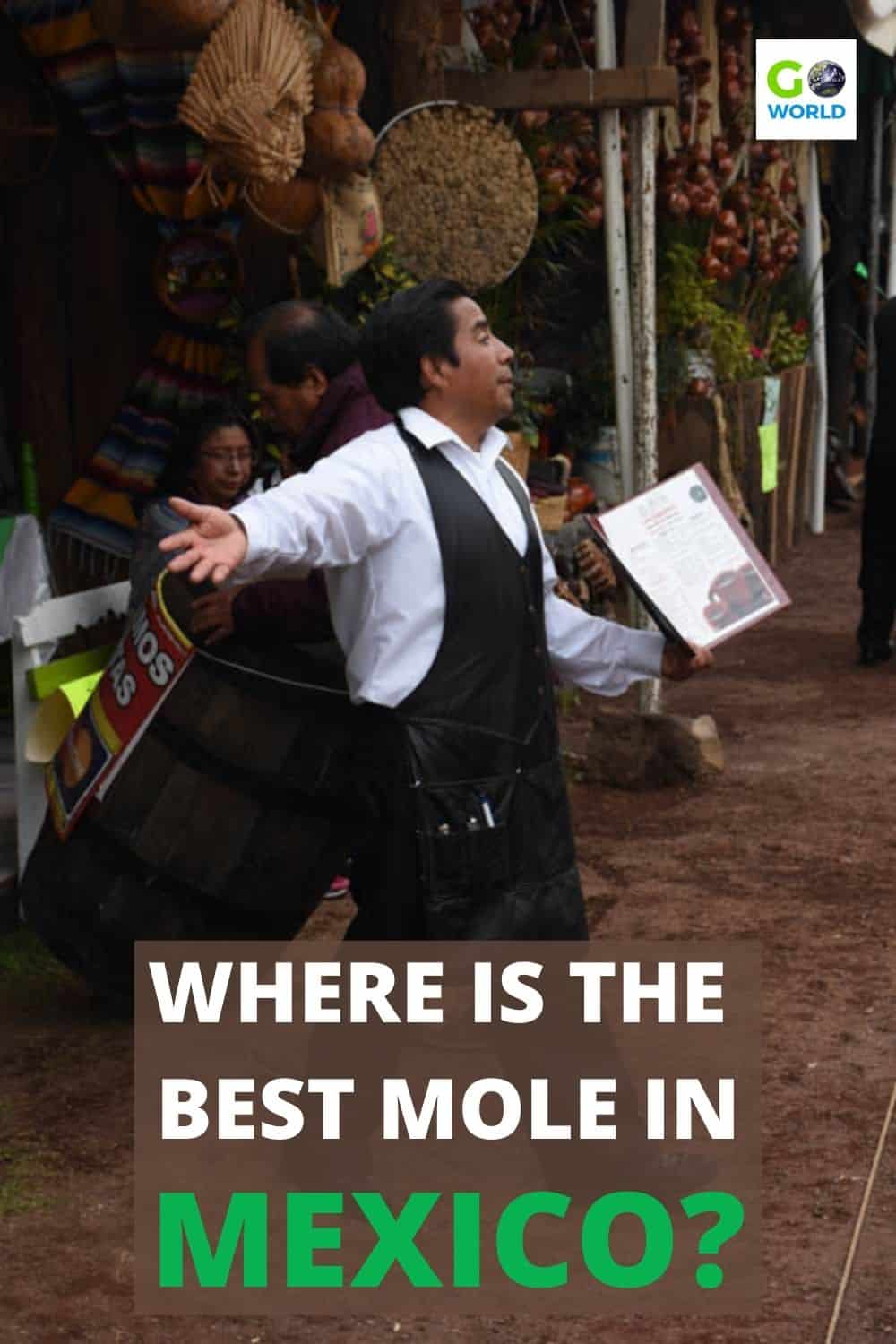
There are probably as many ways to prepare mole as there are moles. In Oaxaca, I learned to sauté some tomatoes before adding the mole powder. In San Pedro, most cooks skip that step.
Instead, they sauté the mole, browning it slightly in manteca (lard) before adding chicken broth. Once you have the consistency you like, you’re ready to enjoy the mole.
After sampling mole in the stores, it’s time to try a restaurant and there are many to choose from. Again, deciding can be difficult but there’s really no bad option. Mole don Pancho is the largest restaurant and it’s certainly an excellent choice but several smaller restaurants–like El Familiar–are also excellent.
In San Pedro, mole served over a turkey leg is the most popular dish, but the mole enchiladas are worth a try. In San Gregorio Atlapulco, a nearby pueblo, I learned to simply add steamed vegetables to mole, which can then be eaten with tortillas made fresh at a nearby tortillería.
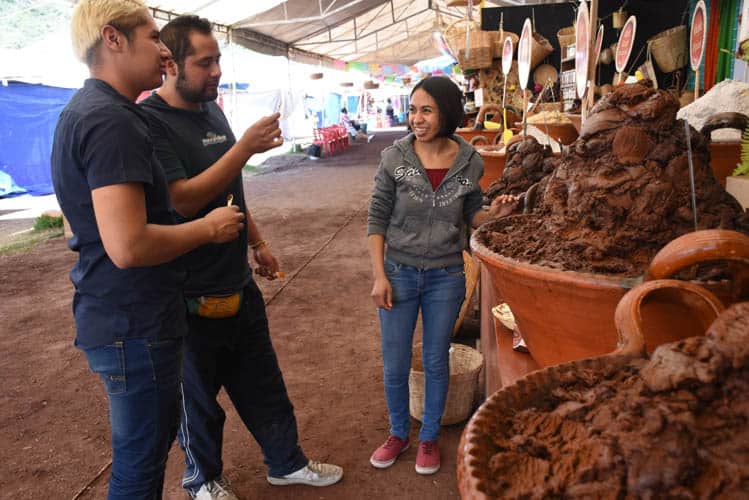
A Fair Celebrating Mole in Mexico
In 1977, several restaurant and store owners wanted to promote the pueblo’s mole and decided to have a fair. The first one was held in May and had only four restaurants participating. Later, the fair was moved to October.
It’s now held in a small arena a short distance from the town’s center. The fair grew to include 29 restaurants and 50 stores in 2018.
The fair also features stands selling local sweets. Many of the sweets are made from amaranth, which is grown in nearby Santiago Tulyehualco. Pottery and a variety of other handmade crafts are also on sale.
Other stands and a few bars sell pulque. This is a local drink made from maguey, which is very popular in San Pedro and surrounding pueblos. There’s also live music all day and well into the night and a variety of carnival rides.
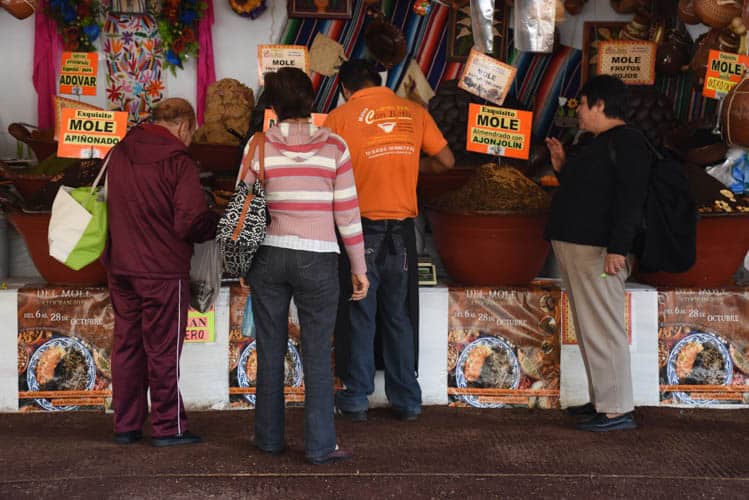
If You Go:
In addition to all the restaurants and Mexican markets selling mole there’s the San Pedro Apostol Church, which was dedicated on August 28, 1680 and has been declared a national monument.
Also, a small park in the center of town is a great place to relax and digest your meal (it’s right across from Restaurante Mole don Pancho). Its cobblestone streets are lined with colonial-era buildings.
Unfortunately, there are no hotels in San Pedro and no Airbnb rentals. But there are plenty of hotels and Airbnb in Xochimilco. It’s about a 20-minute taxi ride which only costs a few dollars.
Xochimilco is famous for its lovely boats which take tourists on rides through canals originally laid out by the Aztecs, so it’s worth spending at least a day or two there.
Author Bio: Joseph Sorrentino is a writer, photographer and playwright. His articles and photographs have appeared in, among others, La Jornada del Campo, Commonweal Magazine and Mexico News Daily. His plays are published by Heuer Publishers, Brooklyn Publishers and Heartland Publishers. He currently lives in Mexico.
- Travel Guide to Austria - April 17, 2024
- Travel Guide to Italy - April 17, 2024
- Travel Guide to Germany - April 17, 2024
